Marc Janowitz designed Dispatch’s summer tour, stopping at iconic venues like the Red Rocks Amphitheater in Morrison, Colo., and New York’s Central Park SummerStage. The main challenge for this tour was scaling the design to different venues so that it would not be overwhelmed in some venues or compromised in large ones. His scenic design references shapes from abstract Native American themes. The lighting was chosen to evoke sunsets and sunrises, and to create what he called “a two-way reflection, so the band and the audience can see each other.” The uncluttered look also allowed the audience and band to be aware of the different surroundings, from the trees in Vermont to the dramatic landscape of Red Rocks. He describes his goal for the production as, “an inclusive experience.” The tour finishes on September 21, at Blue Hills Bank Pavilion, Boston.
Live Design chats with Janowitz about the design before the end of the tour.
Live Design: What was your remit for the tour?
Marc Janowitz: Dispatch wanted to reference Native American culture and art. One of the band’s friends is a Native American visual artist, and they were trying to raise awareness for tribal causes. My early ideas were based on images of dreamcatchers and warrior headdresses but more abstract.
LD: What was the main challenge for this design?
MJ: It had to be flexible enough to accommodate many venues. When management first approached me, they called some of the venues “boutique sheds,” meaning outdoor venues for 15,000 to 3,000 people. Some of them permanent, like Red Rocks in Colorado, and some temporary. There was no consistent infrastructure. Some places were large with good load-bearing capabilities, and some had almost none. I wanted a unique design that would feel like it wasn’t being compromised in the small venues but wasn’t undersized in the larger ones. One of the things I kept in mind was I wanted a rig that you could see through so you could really experience the setting. Everyone including the band could experience Red Rocks, or the trees in Vermont, or being in Central Park. It was an inclusive experience.
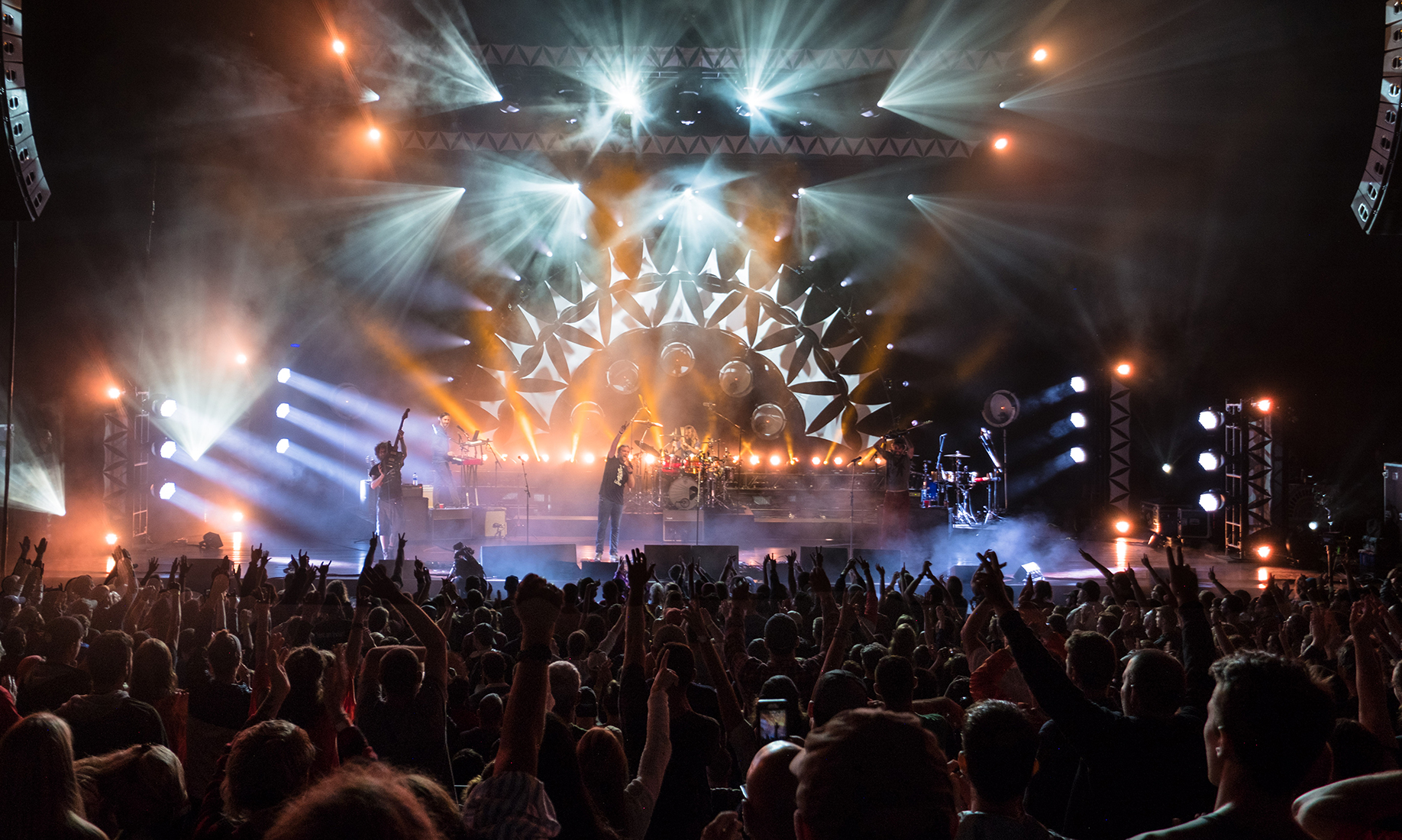
LD: Tell us about the arch.
MJ: My idea was to have it be a floating, airy, atmospheric, scenic piece that wouldn’t feel super heavy or overbearing. The band’s logo is in the shape of an arch, and it reminded me of a sun radiating over a horizon, and by using tungsten illumination, it can be the first light of sunrise over the hills or the last glow of sunset.
LD: What fixtures did you use in the arch?
MJ: The circles within the scenic piece are actually 2KW Mole Richardson Sky Pans. They are warm tungsten fixtures that can put the band in silhouette but because they are so soft, they emanate out to the audience in a lovely soft light that isn’t abusive to them. I described it as a two-way reflection, so the band and the audience can see each other. In rock shows, sometimes the moving lights panning the audience blind them to the spectacle you want them to see in the first place. We made an effort to not melt their faces!
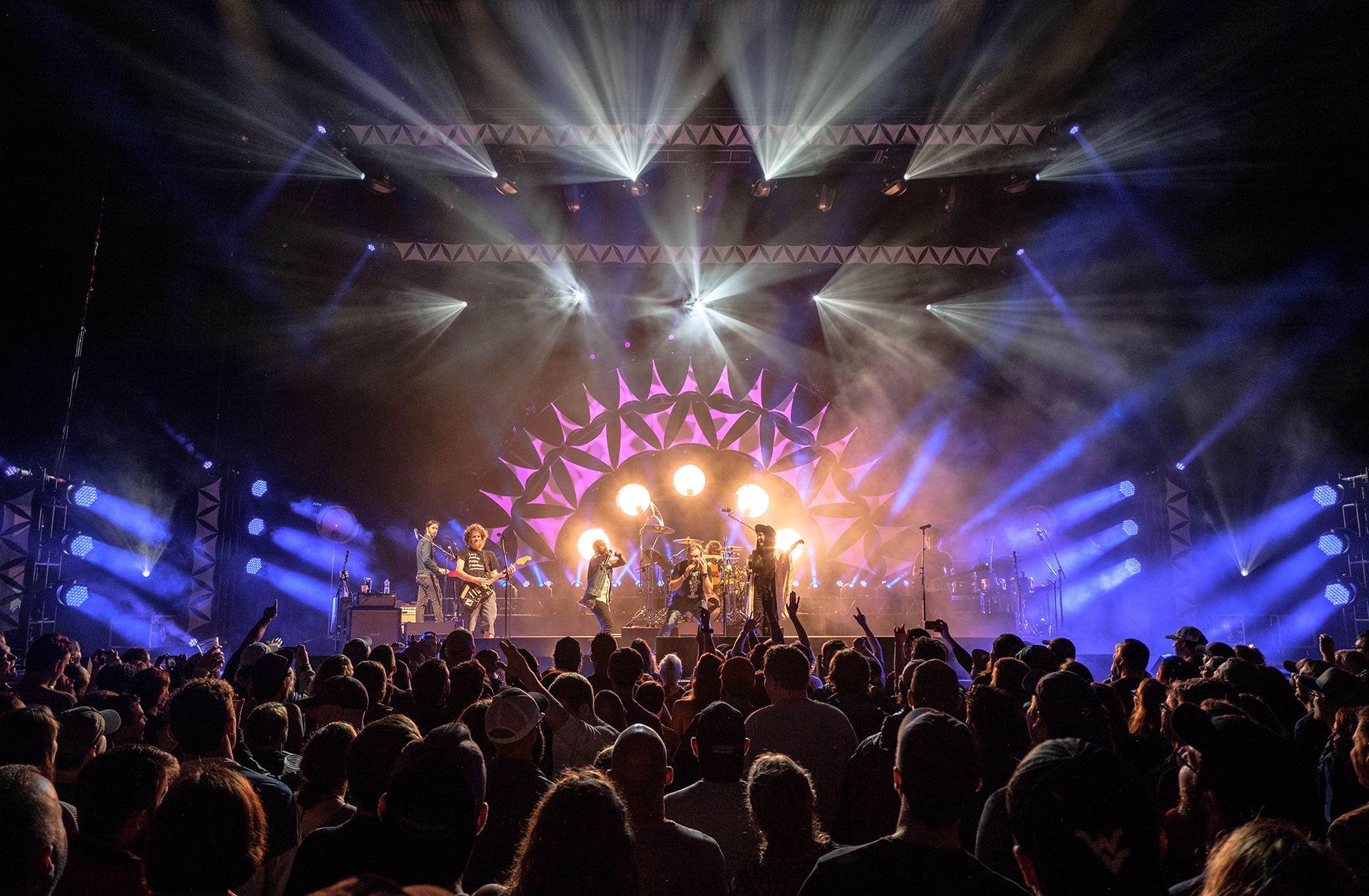
LD: How did you make the panels that look like panes from a stained glass window?
MJ: We approached Rose Brand to create soft stretch triangles around the arch from fabric, and they also built the frame holding them. The frame is lightweight so it doesn’t require much rigging and breaks apart in a couple of places so it is easy for travel. I wanted the soft stretch shapes for two reasons. Firstly, they work better for weight restrictions; and secondly, when they catch the wind outdoors, they undulate slightly, giving them an organic quality you don’t get with hard panels.
LD: How were you able to make the design work in each venue?
MJ: At the start of the tour in Vail, Colo., we used an abbreviated version of the design as there were no overhead lighting trusses. The arch sat on the ground instead of being suspended three feet above it. We rented two crank lifts locally for the day to hold two steel columns for lighting. Later, in Maine, we were able to use the full-size implementation: three overhead trusses and four at the sides to frame the stage.
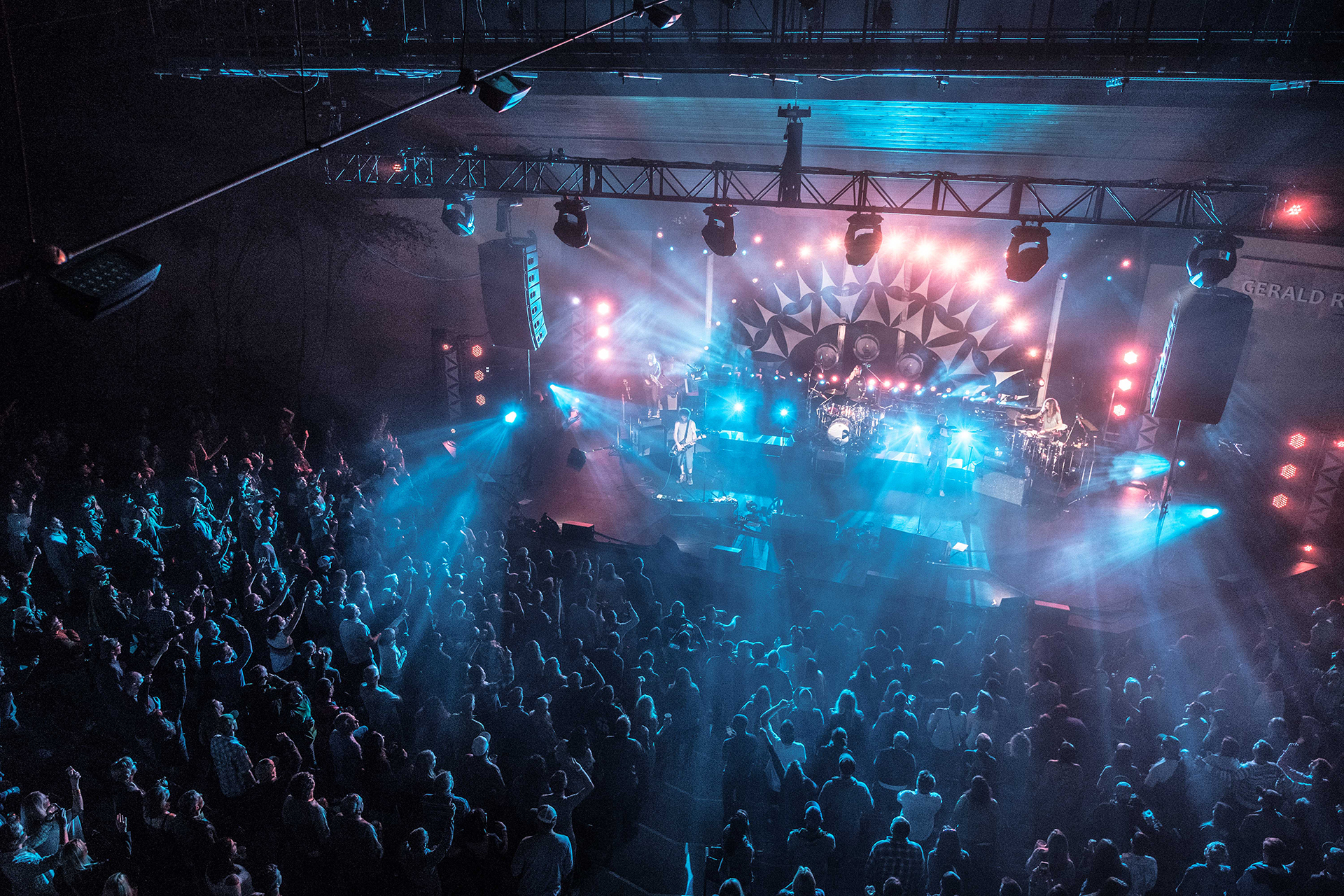
LD: Was any other part of the design influenced by the tour venues?
MJ: There is a Tyler Truss on wheels with Robe Pointes that shoot out and illuminate the band that is pre-rigged and just rolls on and off. It’s festival-friendly!
LD: Tell us more about your fixture choices.
MJ: We light the arch from four different directions: The fabric triangles are translucent, like flags, so light from upstage [TMB] Solaris Flares shines through them. Beneath the arch is a line of 24 GLP impression X4 S LEDs that shoot straight up and graze the front of it. Around the truss are Robe Spiikies. They are so small and light; it is really the perfect fixture on lightweight scenery. I wanted to evoke sunbeams and also have them be textural pieces. Plus, they are fast and effective in clusters. The beam can get so super tight, and you can get them so close together that they can make really impactful sweeps and contours. I used Philips Vari-Lite VL4000s on hanging trusses for front lighting and to project patterns on the arch. The tour is run on a [High End Systems] Hog 4 Full Boar with two extra playback wings.
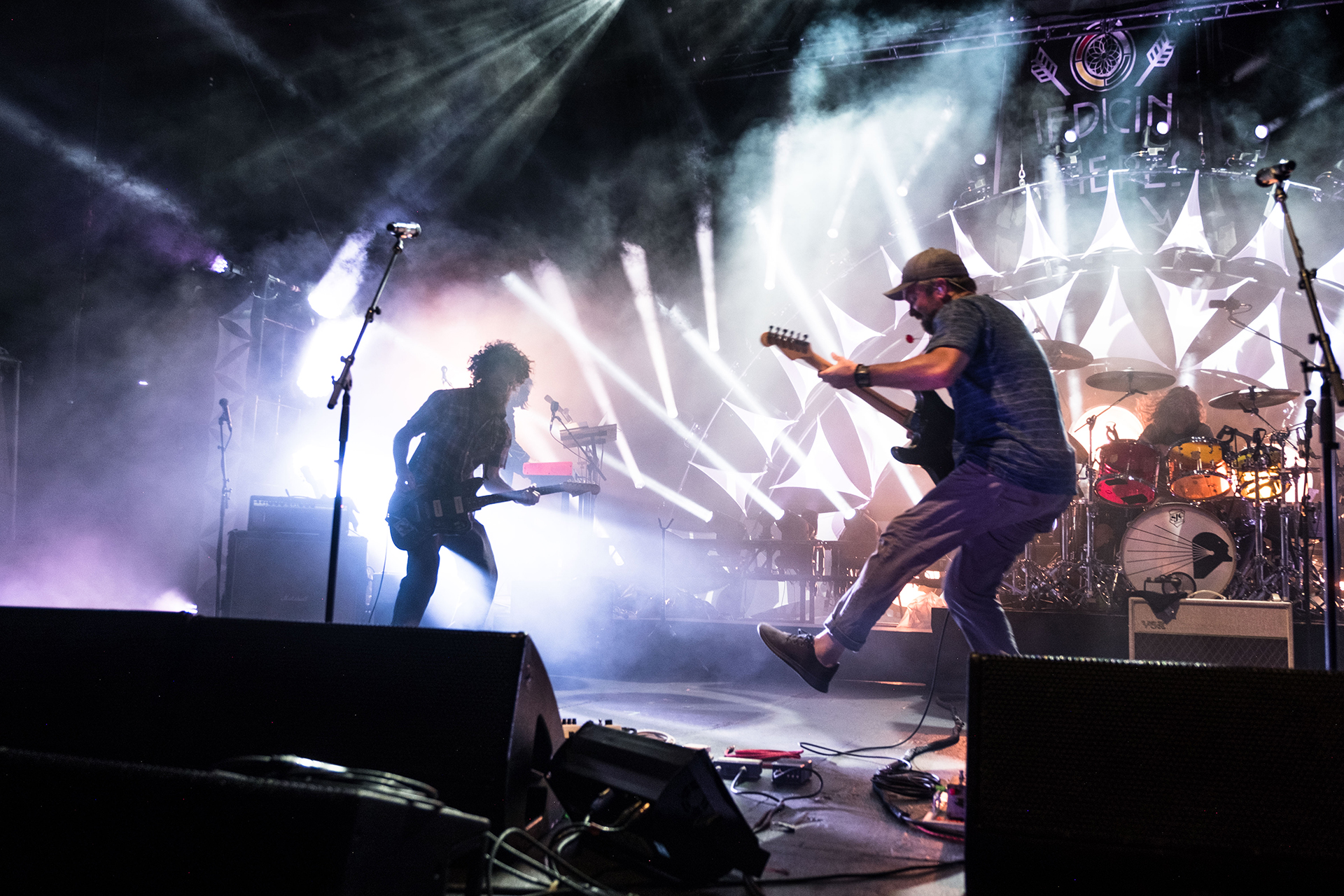
LD: Why did you pick the GLP fixtures?
MJ: The X4 S is very small so you can collect a lot of them together; they are very bright with great color range. I like to keep LEDs in the same family they mix colorwise, and the X4 L is the larger cousin with a big, beefy, soft beam that can be super bright. It works well with the X4 Ss.
LD: Did you choose anything you had used before for this tour?
MJ: The [Philips] Vari-Lite VL4000, the predominant overhead moving profile light. It didn’t feel like a new fixture for me as I’ve used other VL products. I chose it because it has great color morphing options and gobos and has an integrated framing shutter so we didn’t overshoot the arch. It was a good tool in this arsenal.
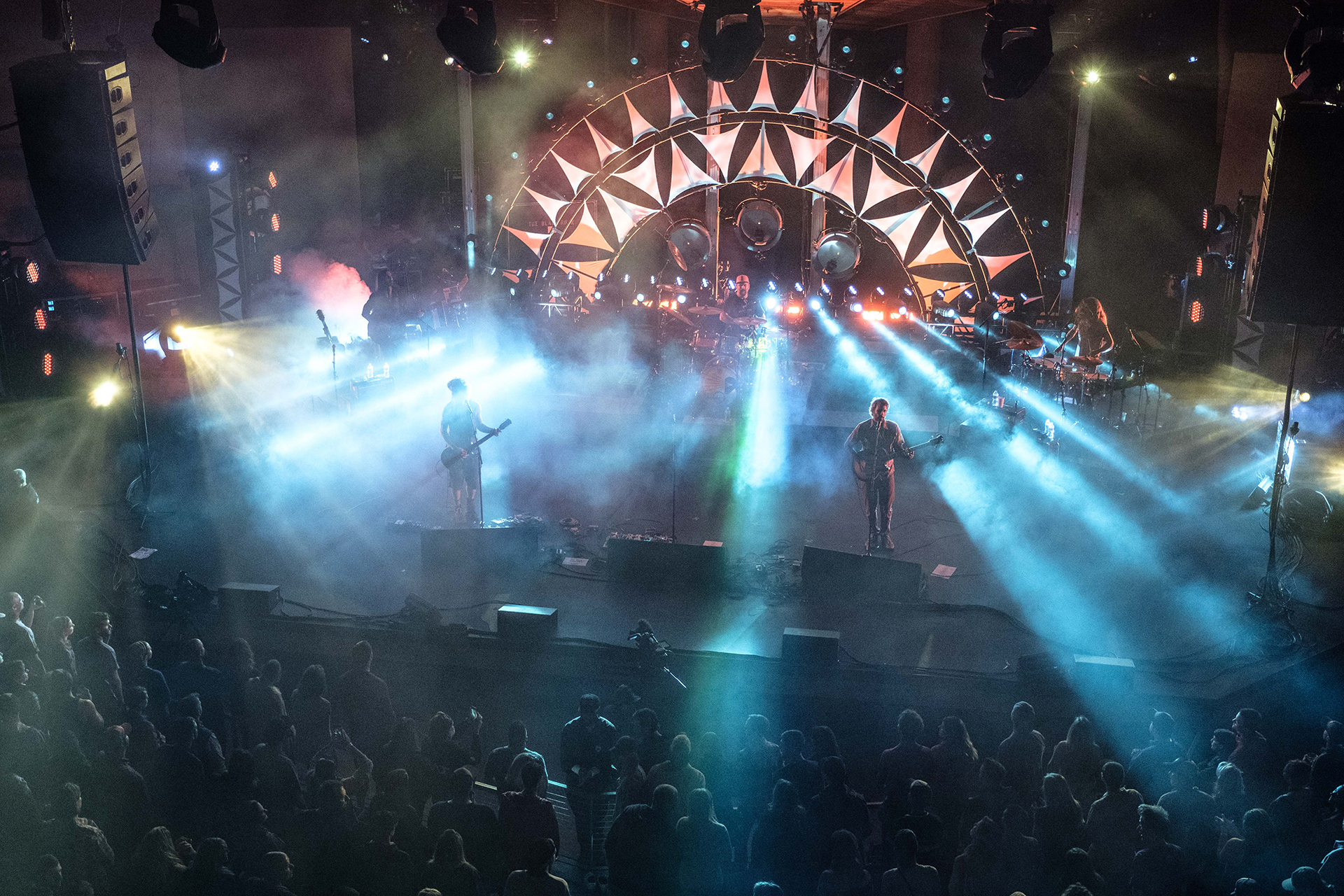
LD: Who did you work with on this tour?
MJ: Rose Brand, NJ for the triangles in the arch and Kathy Lloyd at 4Wall Nashville for lighting and rigging. Chase Nichols is the tour LD and programmer, and Matthew Guice, the production manager, was a huge collaborator. We spent a lot of time coming up with an impactful design that was fiscally responsible.
Lighting Gear List
- 36 GLP impression X4 S
- 12 GLP impression X4 L
- 7 Mole Richardson SkyPan 2KW
- 18 Robe Spiikie
- 26 Philips Vari-Lite VL4000 Spot
- 10 Robe Pointe
- 12 TMB Solaris Flare Q+
- 4 Ultratec Radiance Touring Hazer
- 1 High End Systems Full Boar 4 (include spare)
- 2 High End Systems Hog 4 Playback Wing